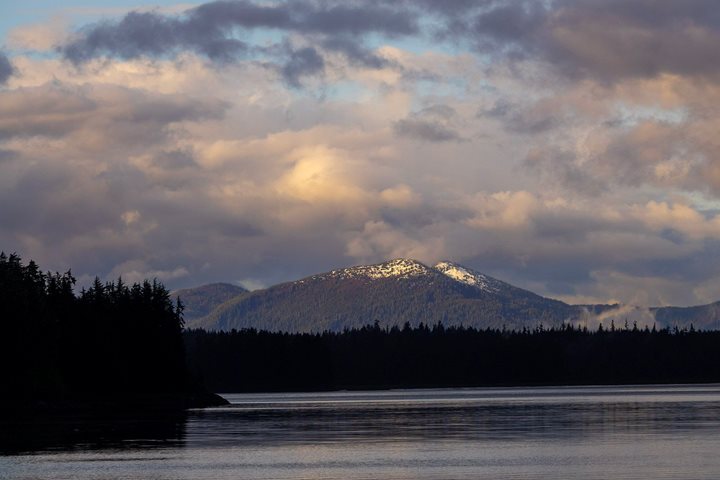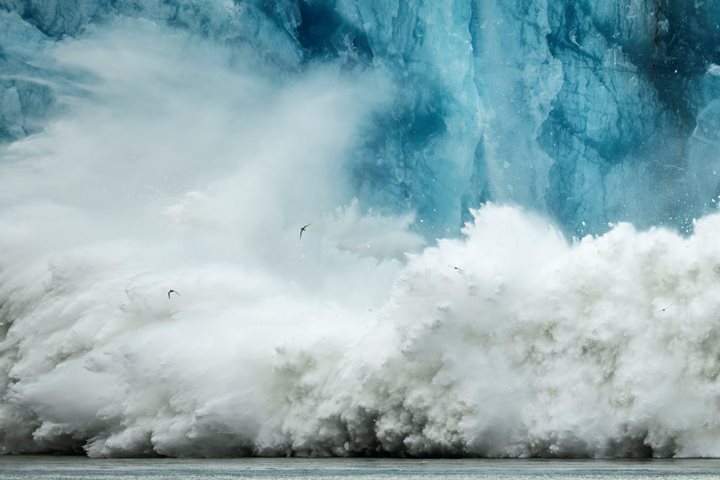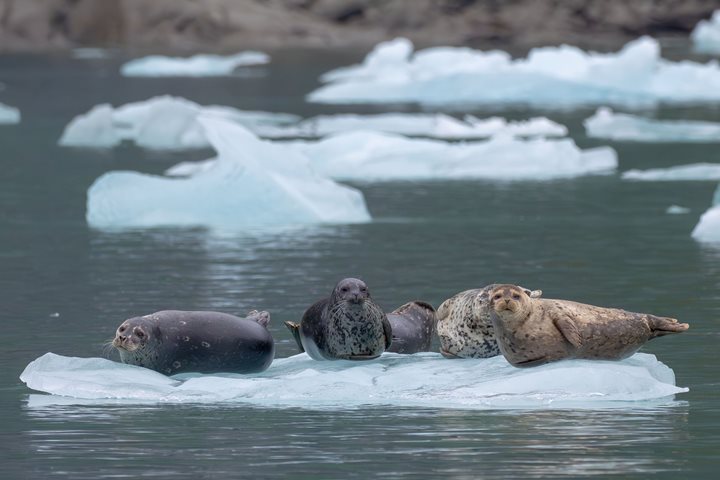You could feel an icy chill ripple through the air as the guests and crew of National Geographic Sea Bird awoke this morning at the mouth of Endicott Arm. Before journeying up to Dawes Glacier at the head of the fjord we made a pit stop in Seven Mile Cove for morning kayaking operations. After enjoying a morning paddle, the ship continued onward into the narrow fjords of Endicott Arm. As more icebergs and bergy bits appeared, everyone was anxious to reach our destination. About three miles from the glacier face the fleet of Zodiacs were deployed and everyone was off to the races heading for the sapphire blue ice wall. Along the way, the Zodiacs stopped at waterfalls, observed harbor seals and their pups, and even saw a pair of harbor porpoises. Once the fleet finally reached the face, everyone sat in awe of the thunderous glacier. After a fantastic viewing period with Dawes Glacier, we retreated to the ship for a true polar plunge. Six brave guests conquered the icy waters and dove into a balmy 37°F ice bath. A wonderful end to a wonderful trip on National Geographic Sea Bird.
- Daily Expedition Reports
- 11 Jul 2023
Endicott Arm, 7/11/2023, National Geographic Sea Bird
- Aboard the National Geographic Sea Bird
- Alaska
Alex Farrell, Naturalist
For Alex Farrell, wild places have always been the ultimate teacher. From alpine ridgelines to coastal waters, she has built her life around studying, experiencing, and respecting the power of the natural world — and sharing that passion with others....
Read MoreShare Report
Alaska Escape: LeConte Bay, Wrangell and Misty Fjords
VIEW ITINERARYRelated Reports
5/29/2025
Read
National Geographic Sea Bird
Endicott Arm
Dawes Glacier, located at the head of Endicott Arm in Southeast Alaska, is an active tidewater glacier in the remote Tracy Arm-Fords Terror Wilderness Area. Reaching the glacier requires a 30-mile journey through a narrow fjord lined with sheer rock walls rising over 3,000 feet. These cliffs are veined with waterfalls and often blanketed in mist. Throughout the fjord, remnants of the glacier float in the form of icebergs. The glacier feeds cold, silty meltwater into the fjord, giving the water a distinctive milky-green hue and supporting a rich marine food web. Harbor seals were hauled out on ice floes near the glacier. Gulls and Arctic terns were actively feeding, likely drawn by the small fish and plankton concentrated by the glacial outflow. The glacier calved several times, hurling large chunks of ice across the water’s surface, sending the birds fleeing. The sound of the ice hitting the water echoed off the steep rock walls that rise thousands of feet on either side.
5/27/2025
Read
National Geographic Sea Bird
Dawes Glacier in Endicott Arm
We could not have asked for a better way to end the expedition. Our last day was amazing! Visiting Dawes Glacier in Endicott Arm was a highlight with its crystal-blue ice and resting harbor seals floating by on the ice. In the evening, we even got to see a couple of humpback whales off the bow of the ship. We ended the day by watching images of the beautiful moments created on our expedition during the famed guest photo slideshow.







